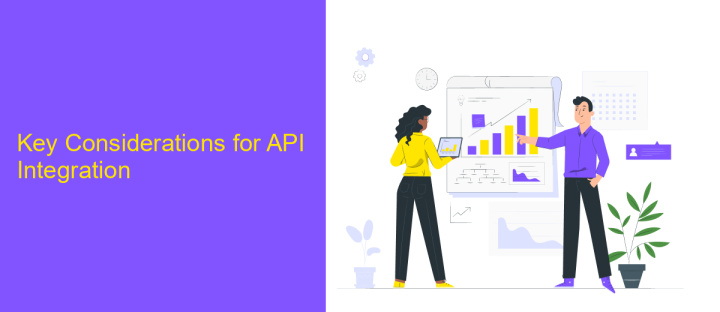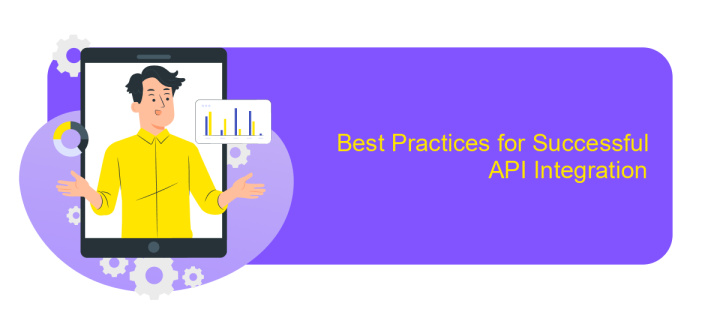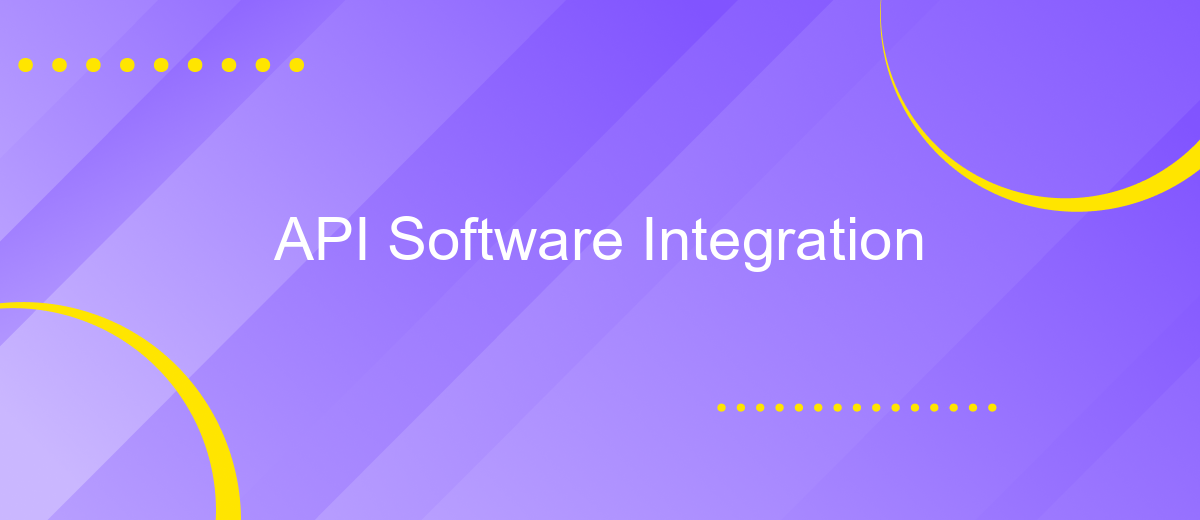API Software Integration
In today's rapidly evolving digital landscape, API software integration has become a cornerstone for businesses seeking to enhance operational efficiency and innovation. By seamlessly connecting disparate systems and applications, APIs enable organizations to automate processes, streamline workflows, and unlock new capabilities. This article explores the fundamental principles of API integration, its benefits, and strategies for successful implementation, providing insights into how businesses can leverage this technology to stay competitive.
Understanding API Software Integration
API software integration is a crucial aspect of modern software development, enabling different applications to communicate and work together seamlessly. By leveraging APIs, developers can enhance functionality, improve efficiency, and provide a more cohesive user experience. APIs act as bridges between systems, allowing them to share data and services without requiring complete understanding of each other's internal workings.
- Facilitates communication between disparate software systems.
- Enables automation of tasks and processes.
- Enhances scalability by allowing easy integration of new features.
- Improves user experience through seamless data exchange.
- Reduces development time by utilizing existing services and functionalities.
Understanding API software integration involves grasping how APIs function as intermediaries, translating requests and responses between systems. This knowledge is essential for developers aiming to create scalable and efficient applications. By effectively integrating APIs, businesses can innovate rapidly, adapt to changing market needs, and maintain a competitive edge. Mastery of API integration not only streamlines operations but also opens up new opportunities for collaboration and growth in the digital landscape.
Key Considerations for API Integration

When embarking on API integration, it's crucial to understand the specific needs of your business and the systems you aim to connect. Begin by identifying the key functionalities required from the integration and ensure that the APIs you choose offer comprehensive documentation and support. This will facilitate smoother implementation and troubleshooting processes. Security is another paramount consideration; ensure that the APIs adhere to industry-standard security protocols to protect sensitive data during transmission.
Additionally, consider the scalability and flexibility of the APIs to accommodate future growth and changes in your business environment. Tools like ApiX-Drive can simplify the integration process by providing a user-friendly platform that automates and streamlines connections between various applications. This can significantly reduce the time and resources required for setup and ongoing maintenance. Lastly, evaluate the cost implications of the integration, including any subscription fees for third-party services, to ensure that it aligns with your budget and delivers a strong return on investment.
Common API Integration Methods and Architectures

API integration is a fundamental aspect of modern software development, enabling disparate systems to communicate and share data seamlessly. There are several common methods and architectures employed to achieve effective API integration, each with its own set of advantages and use cases.
- REST (Representational State Transfer): A popular architectural style that uses HTTP requests to access and use data. RESTful APIs are stateless and can handle multiple types of calls, returning data in formats like JSON or XML.
- SOAP (Simple Object Access Protocol): A protocol for exchanging structured information in web services, relying on XML and typically used in enterprise environments where security and ACID compliance are crucial.
- GraphQL: A query language for APIs that allows clients to request only the data they need, improving efficiency and performance. It is particularly useful for applications with complex data requirements.
- Webhooks: A method where an API sends real-time data to another system when specific events occur, often used for notifications and real-time updates.
Choosing the right API integration method depends on the specific needs of the application, including factors like data format, security requirements, and real-time capabilities. Understanding these methods helps developers design robust and efficient integrations, ensuring seamless communication between systems.
Best Practices for Successful API Integration

Integrating APIs effectively is essential for seamless software communication and enhanced functionality. To achieve successful API integration, it is crucial to understand the specific requirements and capabilities of both the API and the system it will interact with. This ensures compatibility and optimizes the use of available features.
Proper documentation is a cornerstone of successful API integration. Comprehensive documentation provides detailed information on API endpoints, authentication methods, rate limits, and error handling. It serves as a guide for developers, helping them understand how to implement the API correctly and troubleshoot potential issues.
- Ensure API security by using authentication protocols like OAuth or API keys.
- Monitor API usage and performance to identify and address bottlenecks or failures.
- Implement error handling and retry mechanisms to manage unexpected API responses.
- Maintain version control to handle API updates and deprecations smoothly.
Finally, collaboration between development teams is vital. Regular communication helps address challenges promptly and ensures that everyone is aligned with the integration goals. By following these best practices, organizations can enhance their software solutions and deliver better user experiences through effective API integration.
- Automate the work of an online store or landing
- Empower through integration
- Don't spend money on programmers and integrators
- Save time by automating routine tasks
Troubleshooting and Maintaining API Integrations
Troubleshooting API integrations requires a systematic approach to identify and resolve issues efficiently. Begin by verifying authentication credentials, as incorrect details can lead to connectivity problems. Check API documentation for any updates or changes that might affect integration. Utilize logging to capture error messages, which can provide insights into the root cause of issues. Network connectivity should also be assessed, ensuring there are no firewalls or restrictions blocking API requests. If problems persist, consider reaching out to the API provider's support for further assistance.
Maintaining API integrations involves regular monitoring and updates to ensure seamless operation. Implement automated testing to detect issues early and reduce downtime. Tools like ApiX-Drive can simplify integration management by offering a user-friendly interface to connect and automate workflows without extensive coding. Regularly review API usage limits and optimize requests to prevent exceeding quotas. Stay informed about API version changes and deprecations to plan timely migrations. By proactively managing these aspects, you can ensure reliable and efficient API integrations.
FAQ
What is API software integration, and why is it important?
How can I ensure the security of my API integrations?
What are the common challenges in API integration?
How can I automate workflows using API integrations?
What should I consider when choosing an API integration tool?
Apix-Drive will help optimize business processes, save you from a lot of routine tasks and unnecessary costs for automation, attracting additional specialists. Try setting up a free test connection with ApiX-Drive and see for yourself. Now you have to think about where to invest the freed time and money!


